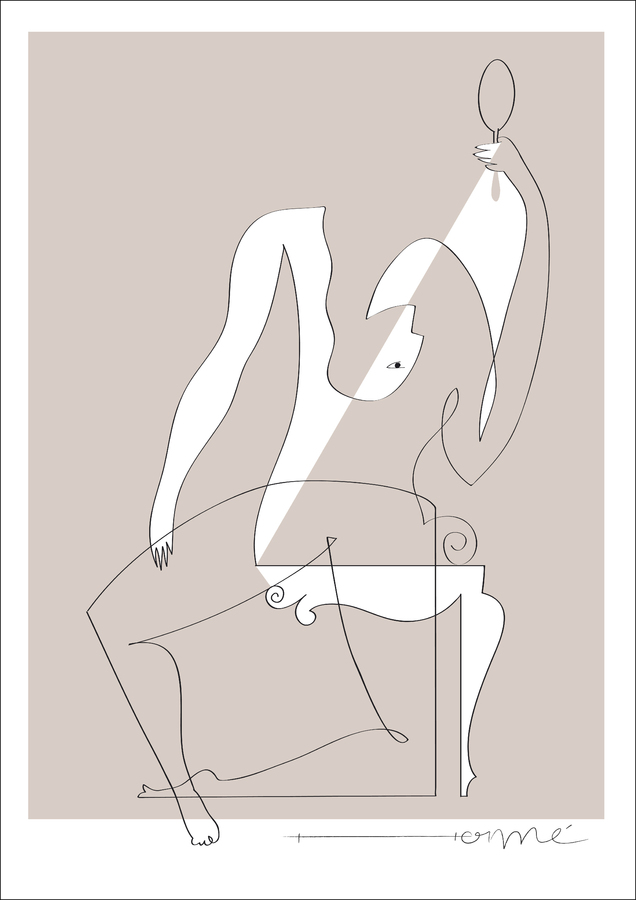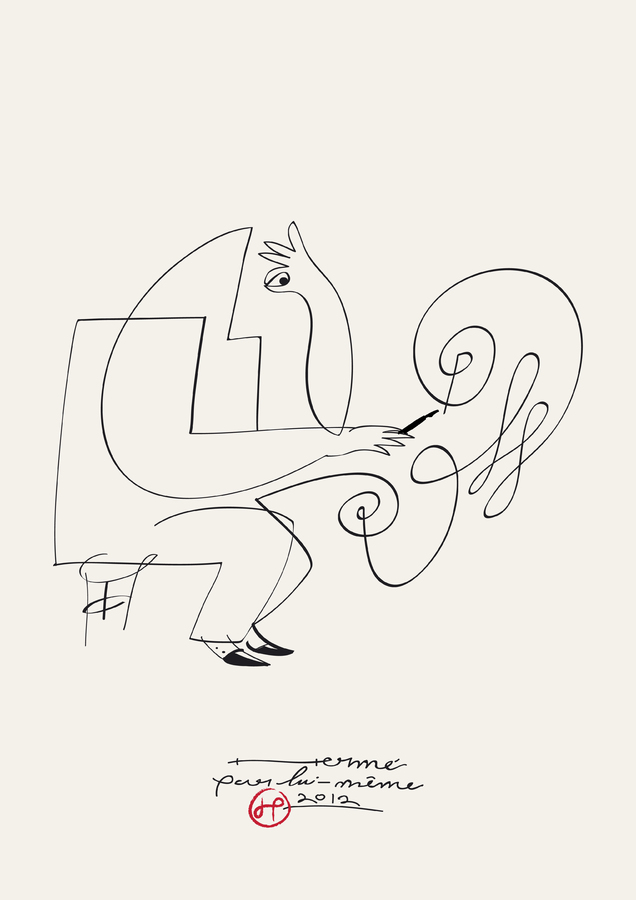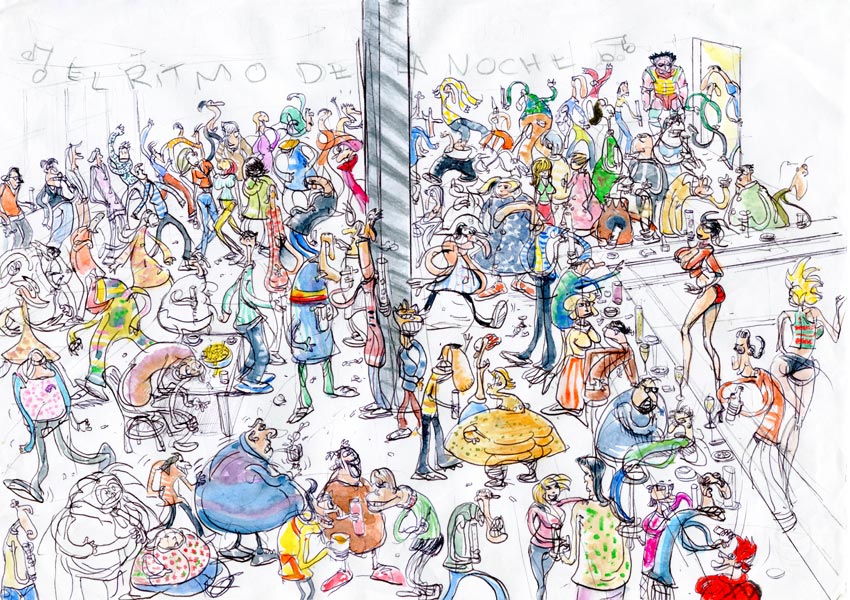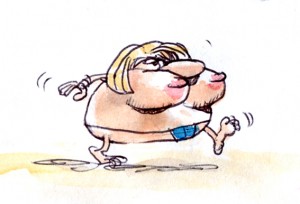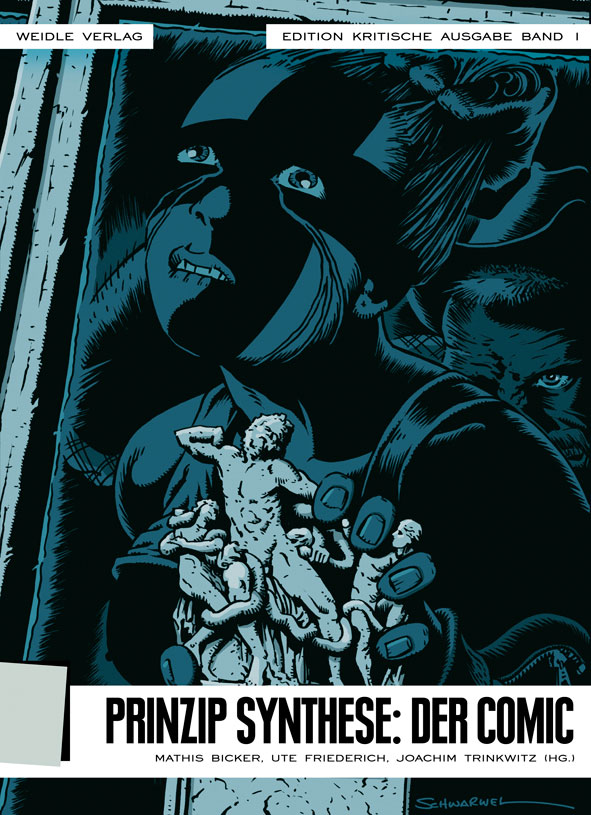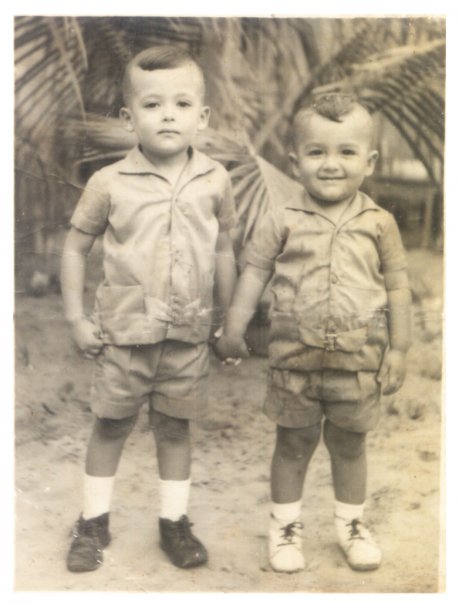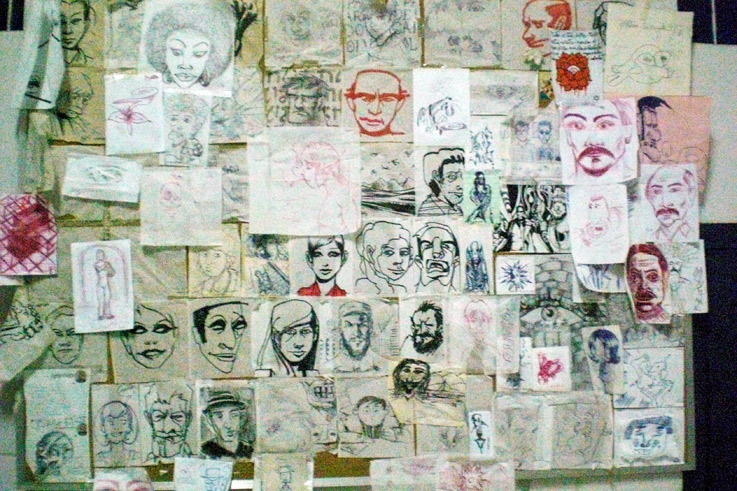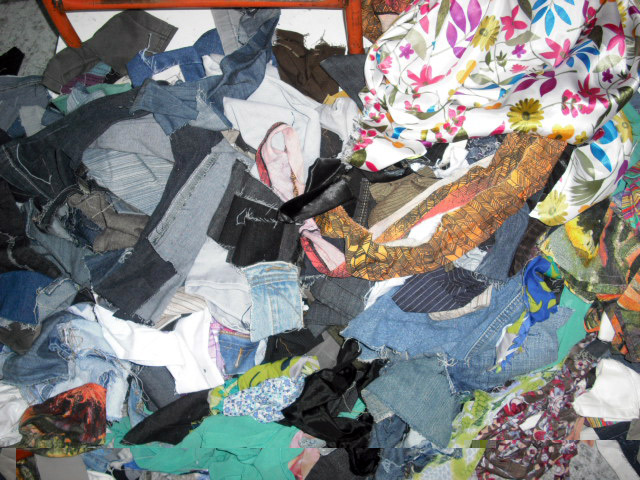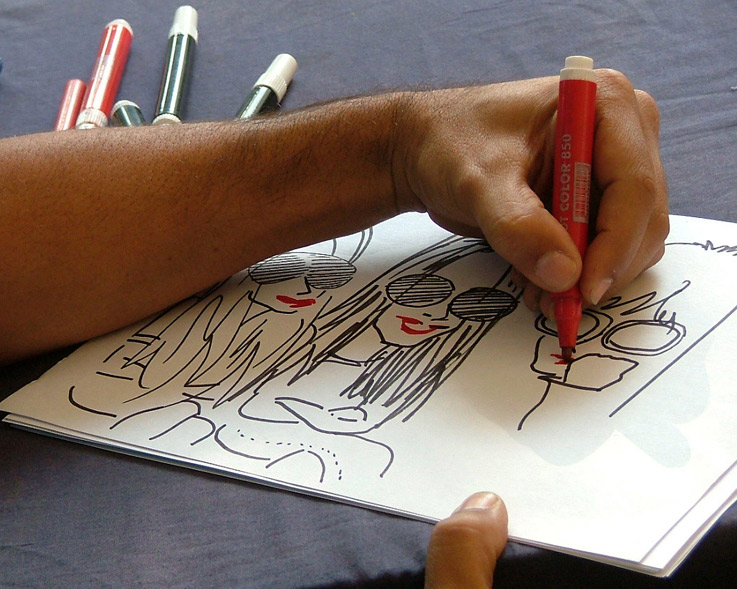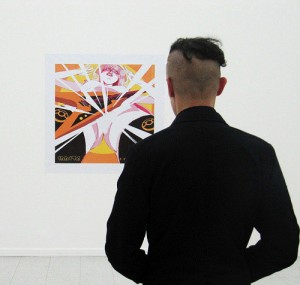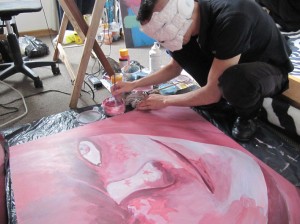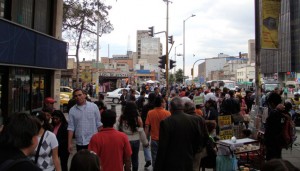By Kim Frost
The universe of toonpool artist Hermé is a sun-splashed playland of the gods floating high above the sublunary world we know. These curvaceous aristocrats, with their idealized faces and supple bodies, are like classical statues that have been awakened. Transparent and light as air, they frolic in a place where it’s okay to go naked and drink as much wine as you want. Gods just wanna have fun!
Hermé is like a champion golfer who wins every game with the fewest possible strokes. His bold characters arise from a sinuous line that looks as if it had been drawn in one sweeping gesture. The rich colors – gold, red, white, shades of blue – evoke regality and theatricality, humor and splendor, ecstasy and ornament.
A robust figure who looks like Icarus is the subject of Pacwine. In the myth, Icarus was incinerated for trying to make a trip to the sun with a pair of DIY wings. Here, though, the strapping god looks great, and his gigantic wings aren’t even singed. Did he survive the solar trip, or change his itinerary? With the grapes he holds, he could also be Dionysus, the god of wine and madness. Or is he really Hermé himself – Hermes, the winged messenger? Hermes is one of the busiest gods in the pantheon, in charge of agriculture, hospitality, friendship and sex, games and good luck. I love the white calligraphic lines that delineate his dark body, the curlicues of his joints, and the rosebud whirl inside the shoulder. And here’s a surprise: Pac-Man bouncing into the frame, eager to engulf a blood-red stream of wine that tilts out of the pagan altar (that’s a beautifully drawn phallic symbol of course). The layers of enclosure create security – the wings that shelter the god and his sun-warmed grapes, the dark floral scrolls framing the altar and Pac-Man, and the sun’s glow embracing the entire scene. In this conception Hermes is primarily a giver of life, the conduit of the earth’s abundance. He’s like the goat goddess who found the infant Zeus, the future king of the gods, and fed him with her milk.
In The Mirror, Hermé depicts a seated woman who appears to be gazing at herself in a hand-held mirror. The main surprise is that she has no head – the wavy line down her back suggests a swathe of long hair, but it turns into the inverted profile of a man. This vain woman seems to be losing herself, paradoxically, in her obsession with her own beauty. Is this a comment on the emptiness of narcissism? Or does vanity have utility after all? Can it create a negative space in a woman’s psyche and in her body, a point of vulnerability, permitting the man to enter? Another possibility is that the poor girl has literally lost her head over some guy. Everyone knows the feeling of being so much in love that everything looks upside down, including your own face in the mirror. This drawing also reminds me of Hermé’s charming self-portrait [see below] in which the artist uses the power of the drawn line to create his own body on the page. In this view we can take the seated figure in The Mirror to be the artist himself, who raises a mirror to life, and always reveals himself in his own creation.
Here is my interview with Hermé.
Where were you born, and where did you study?
I was born in Rio de Janeiro, Brazil, one of the most beautiful cities in the world. I was inspired by this beauty and light. I have never studied drawing, but I always liked to draw (I have drawings I made at three years of age) and I started drawing professionally at age sixteen.
Who are your main influences?
I have always been greatly influenced by ancient Greek art. I have a fascination with the drawings on Greek vases. I have also been influenced by Picasso, Steinberg, and Roberto Burle Marx, among many others, and by Art Nouveau.
What do you use in your work?
I draw with all kinds of stuff, but I’m currently using a Wacom tablet (Cintiq 21 UX), and the Illustrator programs for Mac. I have a large number of printers for all purposes.
When did you become fascinated with wine?
I’m not exactly “fascinated” with wines. There was a time when I produced many drawings on this subject. I am now illustrating the works of Brazilian author Jorge Amado, and depicting women who are present in the work of this author.
What do you do when you’re not drawing?
I like to be very close to my family – children, wife, my dog, and some cats we had in our lives for five months.
-end-
]]>
Toonpool artist Munguίa combines a painter’s command of color with the bold, curvaceous line work and playful humor of a master cartoonist. This is a beautiful, shimmery, decorative style with echoes of Picasso and Klimt, folk art, even ancient mosaics. It’s interesting in itself, but that’s just the beginning. There is always a parody, a joke, a surprising connection or a deeper meaning. His dreamlike scenarios carry you back to childhood, when two unlikely words strung together could call up an instant picture in your head. Or the expression on a dog’s face could put you in a dream. Munguίa encourages the fantasy – and unleashes a gorgeous world of zany, serendipitous delight.
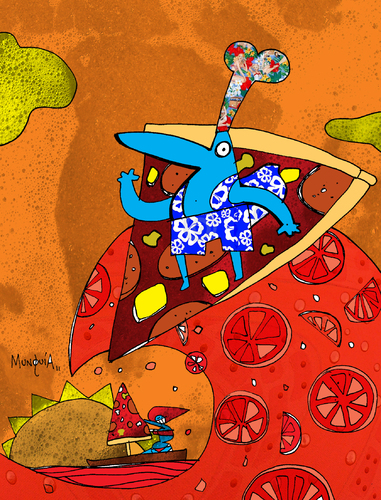
Hawaiian Pizza
A surprised-looking pizza chef catches a wave at sunset on a huge slice of ham-and-pineapple pizza, in Hawaiian Pizza 2. His teal-blue color makes him pop against the red-orange sea of tomato sauce. The waves are foamy with sliced tomatoes, and after a moment it becomes clear what those clouds are – Midas-touched dollops of mozzarella. Like the surfer, we’re carried along by the wave’s red curve and the edge of the pizza slice, to a surprise at lower left – the setting sun frames a tiny bikini-clad girl on a sailboat, with a slice of pizza for the sail. There’s a hum of movement and contrast – flat space gives way to sudden depth, intricate patterns break up smoother areas of color, all in support of the carefree figure at the center with the enviable lifestyle. I would love to be this guy!
What if valet parking were really Ballet Parking, with the lot attendants pirouetting en pointe! In a play on cama, the Spanish word for bed, two beds are entwined in ecstasy in Kamasutra. And I love the sheer outrageousness of Barbies, with the bearded tranny Barbie dolls still encased in their boxes.
Munguίa’s masterwork parodies are always affectionate. A favorite of mine: Monalisa Giving the Finger! At first blush, the cartoonist seems to be putting the most famous painting of all time in its place. But the artist is actually in collusion with his timeless subject. He’d like to give her a break. The lady has been dying to do something rude for a few hundred years, and Munguίa finally gives her the chance!
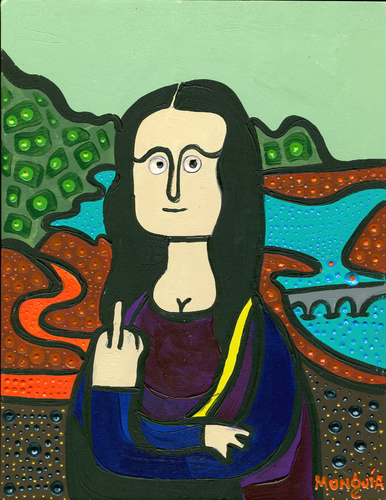
Monalisa giving the finger
My recent interview with Munguίa.
Where were you born, where did you study, and where do you live now?
I was born and raised in San Jose, Costa Rica. I’m currently living in Guadalupe, a canton of San José, the capital.
Which artists inspire you the most?
As a child I was a fan of Garbage Pail Kids and Topps sticker collections. The style of John Pound influenced me as much as Matt Groening and Quino. My country recognizes the influence of my colleagues Nano, Arcadio and Ferrom in my work.
You use a beautiful painterly technique in your cartoons – do you also put cartoons in your paintings?
I just do cartoons – the techniques are what I change. Sometimes I do acrylic paintings, ceramics, sculptures, animations and video games – all related in the unity of my own style into humoristic art.
How do you work?
When working digitally I start with an original drawing with ink on paper, then scan it and color it on the computer. I usually use Photoshop, but now I’m using a Bamboo Tablet and Animator to put color to my drawings on paper. In addition to publishing my drawings on toonpool, I produce the Calcamunguías, a series of stickers printed on vinyl. The collection started ten years ago, and so far there are 1,226 images and counting. Some are printed on tee shirts, and others are printed on ceramic tiles and then shown in galleries.
What do you do when you’re not doing art?
I’m a husband and father of two children. I live with Deborah, Fausto (two and a half) and Fidel (a year and eight months), along with twenty-two dogs recovered by my wife from the street. In our shelter we had five dogs with three legs, two one-eyed dogs, a scarface one, ex-fighters, and mental illness. All good behavior, quiet and clean, thanks to my wife who has an extra-special ability to change the sad and sick into the happy and healthy.
I do art all the time. I paint and program video games for my kids, I help my wife in her work with illustrations and videos, and I also help many animal welfare groups and associations. I love to cook, I move furniture around the house, and I do installations.
More of Munguίa´s work you find here.
]]>toonpool.com artist Gerardo Llobet’s vision is so deeply held that he can’t draw a line without revealing it. His life-affirming spin on the world is encoded in the DNA of his cartoons. The humor and excitement, hubbub and catastrophe of social life his is subject, in his exquisitely realized bar scenes, street scenes, and beach scenes.
The flow of Gerardo’s breezy, fluid lines creates an almost audible buzz, particularly in his crowd scenarios. In Titus, gesture drawing reaches high art in this bar scene full of life, movement and character. A style like this one requires a dead-on technique. It looks effortless, but of course it isn’t. The ability to draw with this kind of freedom is the result of total self-assurance, technically and expressively. The organic curve is pre-eminent in Gerardo’s work. There are almost no straight lines, and where they exist, they show incredible variation – the same line can begin with a thick dark stroke, and end with a feathery, quivering edge.
Gerardo’s people are a true delight. The bodies and faces of his hilarious characters, their popping eyes and ecstatic grinning faces, their screwed-up foreheads and black-browed frowns, reveal every emotion. We do more than see these people – we know them on sight.
Their personalities bloom directly out of the gestural lines of their bodies, in an ideal fusion of form and character.
In Gerardo’s cartoon portrait Primadona 1, we meet a blonde woman in mid-stride, naked except for the strip of her teal-blue swimsuit bottoms. She’s a squat, confident figure in motion, composed of layers. The heavy-lidded eyes surmount a gigantic potato-shaped nose, and the nose juts out from between the huge breasts. These breasts seem to be the Primadona’s real eyes – two ferocious organs that size up the landscape with piercing pink pupils. She’s balanced on her short right leg, while the other foot stabs the air with ecstatic toes, and waves at us like a hand. Her real hand and arm are flung outward like a tasseled cord. Though her face is submerged, we know she’s a beauty. What does she want, a sunnier spot on the beach? A hot dog swathed in mustard? A new man? Whatever it is, this Primadona has an intensely appealing quality. The tenderness of this portrait is characteristic of Gerardo’s affectionate depictions of his characters, male and female.
Here’s my recent interview with Gerardo
What inspires you the most?
The full moon, a little…and seeing the work of great artists.
When did you first become obsessed with bars?
This is how I get beer! I worked in a bar with my parents in my youth.
Which artists did you admire when you were younger?
Moebius, R. Crumb, Edika, Franquin…and lots more!
How do you get your amazing loose and fluid line?
I developed this technique to make quick notes while taking orders at the bar.
I’m interested in how you’ve combined pen and ink with digital – do you draw first, and then color?
I work on parts of drawings with china ink and watercolor, and I also do ballpoint sketches.
I scan them, and then use the magnetic loop. With the magic wand I select areas in which I use gradients, brushes, filters, and the clone stamp to get the same tone as watercolors.
How often do you draw from life, with something in front of you?
At all times I observe the girls around me. The rest is all imagination.
Are women’s boobs bigger in Spain?
Everything is bigger in Spain!
What would you say your philosophy of life is, if you have one?
Pursue gurus!
]]>
Learn how this Angry Bird came into life.
Check out more of Ian Marsden´s videos on his youtube channel.
If you are an artist on toonpool.com and do your own “making of” videos, feel free to send us the link to your video so that we can feature it on our blog as well. Just write to [email protected].
in Comics und durch Comics
u.a. mit den beiden toonpool.com-Zeichnern Schwarwel und Hammel.
Dass Lessing in seinem Laokoon-Aufsatz einst die Vermischung von Literatur und Malerei – und damit das Verquicken der Darstellungen von Zeit und Raum – tabusierte, scheint sowohl unter Comiczeichnern als auch unter eingefleischten Comicfans längst vergessen. Heute lesen wir mit großer Selbstverständlichkeit Comics, ein Medium, das sich genau diesen Gegensatz von Schriftlichkeit und Bildlichkeit zunutze macht und sich als Synthese beider Elemente präsentiert. Doch trotz der gesteigerten öffentlichen Wahrnehmung in den vergangenen Jahren, kommt dem Comic gerade in der akademischen Auseinandersetzung noch immer nicht das Interesse zu, das er verdiente.
Prinzip Synthese: Der Comic, der erste Band der Edition Kritische Ausgabe versammelt Essays, Analysen und Rezensionen von Autorinnen und Autoren, die sich alle im akademischen Umfeld mit diesem Genre auseinandergesetzt haben. Sie sind Lehrende, Studierende und ehemalige Studierende, die das eher seltene Glück hatten, Comics als Gegenstand der universitären Lehre und Forschung zu begegnen. Einige von ihnen haben sich auch in ihrer Abschlussarbeit mit Fragestellungen aus diesem Bereich beschäftigt. Da scheint es nur passend, dass das Cover des Bandes von einer Splashpage aus Schwarwels Graphic Novel Seelenfresser geziert wird, auf der die Figur eine Miniatur der Laokoon-Gruppe in der Faust hält.
Die wissenschaftlichen Essays zeigen in welch vielfältiger Weise Comics den Gegensatz von Schrift und Bild fruchtbar machen. Wie Zeichner das erzählerische Potential des Comics bereits zu Beginn des 20. Jahrhunderts ausloteten, welche Rolle der nicht-visualisierte Zwischenraum zwischen den Panels einnimmt und dass die gegensätzlichen Zeichen des Comics nicht zwangsläufig in einer Synthese aufgehen müssen, führen die Beiträge des Bandes unter anderem vor Augen.
Im Gespräch mit Zeichnerin Barbara Yelin, die mit ihren Werken auch für die aktuelle Hinwendung des Mediums zum Dokumentarischen und zur Reportage steht, zeigt sich, dass nicht nur die Forschung immer noch mit Vorurteilen zu kämpfen hat. Ähnliches kommt in nicht wenigen der Kurzcomics von jungen sowie von bereits arrivierten deutschen Comiczeichnern und -zeichnerinnen zum Ausdruck, die den Band durchziehen und ein Gegengewicht zur wissenschaftlichen Perspektive bieten. Auch hier ist Schwarwel mit einem Beitrag vertreten, ebenso der Bonner Zeichner Björn Hammel, dessen Kater + Köpcke-Strips sich irgendwo zwischen Selbstreflexivität und Metaebene tummeln und damit ebenso eine wissenschaftliche Perspektive auf das Medium bieten, wie es auch die nicht gezeichneten Beiträge tun. Jeder Text und jeder Comic steht hier für sich, bietet einen individuellen Blickwinkel und doch steht alles im offenen Verbund des Bandes. Es verweist aufeinander, vereint und trennt sich. Verbindungen und Bezüge ergeben sich vor allem dort, wo der Leser sie erkennt: »Prinzip Synthese«.
Verlagslink: http://www.weidle-verlag.de/buch_plus.php?bid=164
]]>Junior’s artwork is so amazing that many of us were happy to find the story behind his ideas in the first interview, “Fabric and Fandom”, on toonpool’s blog.
What will you get if you mix cachaça (liquor made from fermented sugarcane) sugar and lime? You will get Brazil’s best known cocktail drink that could make you go to a cocktail party with a giraffe. Read more about it in the following letter:
1. Which movie/TV character you see yourself as and why?
I love Homer Simpson, and now I have the same belly.
2. What are your New Year’s resolutions?
Stop smoking!
3. What bores you the most?
My short time to do all the things I want to do…
4. Do you like your place or would you like to live somewhere else?
One of my dreams is live one time in Cuba… alone…
5. What are you able to do that Superman can’t do?
Superman can’t do my portraits

"The bar", as Junior and his friends call it, is the perfect place to grab a snak in the center of Sao Paolo
6. If you were sleep walking one night, where would you probably wake up the next day?
At the Zoo, kissing a giraffe.
7. What would you wear to be kicked out from a black tie cocktail party
Probably, after some caipirinhas, naked, with one naked giraffe
8. Tell me the biggest prank you did on a friend.
I married her!
9. How to ruin your vacation?
I’m in permanent vacation… I need a job
10. If I gave you a giraffe, where would you hide it?
I don’t have the psychological conditions to answer more questions about giraffes.
11. What do you do when you see the glass half empty!
Sorry, my funny and intelligent answers gone away.
Credits to Nicoleta Ionescu for talking with Junior Lopes
![]() Alex, I find it hard to decide whether your works are cartoons or rather illustrations. Where do you see the difference between the two?
Alex, I find it hard to decide whether your works are cartoons or rather illustrations. Where do you see the difference between the two?
In some cases, the distinction is clear. Take, for example, charts and graphs in scientific books – medical ones, architectural ones, etc. They meet requirements that a cartoon couldn’t. Commercial illustration has evolved a lot over the last fifty or sixty years, especially in package and product design. There has been a development in cartoons, too, but it has been more limited.
You could say that illustration is more of a commercial activity . You create something in order to sell it – like posters or magazine covers. The special quality about cartoons is that they contain a definite and explicit narrative. And they often communicate a strong social opinion to a wider audience.
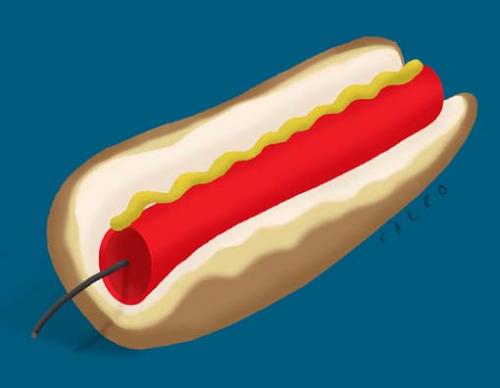 So you think they are two separate things?
So you think they are two separate things?
I see many points of contact between the two. They are both visual media created for the masses – but this issue is hotly debated with passion on both sides. Personally, I see more contact points than differences. My friend, American illustrator Randy Enos summarized the differences and/or similarities between cartoon and illustration like this:
If you draw a political picture of a duck and you label it “duck”, then you’re a cartoonist.
If you draw a political picture of a duck and you don’t label it “duck”, you’re an illustrator.
If you’ve made a funny cartoon duck for the cover of Time magazine, you’re an illustrator.
If you’ve made a funny cartoon duck for the cover of MAD magazine, you’re a cartoonist.
If you’ve made a funny cartoon duck for the cover of the New Yorker, you’ve made a “drawing” not a cartoon or an illustration.*
So, you see, it all has to do with ducks.
Obviously.
My point is that there are cartoons that look like illustrations and vice versa. My own works fall into that category. Sometimes something that starts as a caricature turns out to be an illustration…
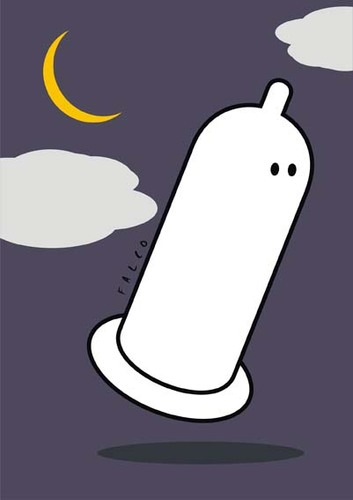 Some of the most memorable of your “pictogram” cartoons are about condoms. In fact, there are a lot of them. Is there something special about condoms for you?
Some of the most memorable of your “pictogram” cartoons are about condoms. In fact, there are a lot of them. Is there something special about condoms for you?
Well, not really. I have also drawn a series of cartoons on bar codes, for example. But condoms are important! They are widely used all over the world. They have existed for a long time and they are used by all social classes. They have saved and are saving millions of lives, preventing sexually transmitted diseases and they help in family planning. I think they deserve a great monument. In fact, I would like to publish a book with a selection of cartoons about condoms. Can you help me?
I don’t know… It sure sounds like something for the toonpool.com community… But, anyway… there are a few cartoons of yours that differ from your “pictogram style” (e.g. this one). What’s the story behind these?
Sometimes I will sketch out an idea and notice that it works better with vectors. Other times I will aim for something a more expressive, giving the line a leading role. Using both techniques work well for me. The drawing to which you refer was a pencil drawing I did as a sketch. Then I put in a little color and left just like that. Actually this doesn’t have much to do with the things I usually do.
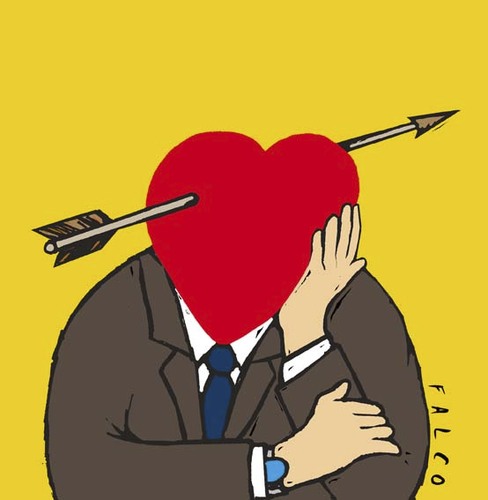 You mentioned your friendship with Randy Enos.. I was wondering: Does the United States embargo against Cuba affect the way Cuban cartoonists and illustrators interact with artists from the rest of the world?
You mentioned your friendship with Randy Enos.. I was wondering: Does the United States embargo against Cuba affect the way Cuban cartoonists and illustrators interact with artists from the rest of the world?
I do not think the embargo has directly affected our ability to make our work known to people from other parts of the world – thanks to technology. We also receive visits from foreign artists including Americans. But the embargo affects us when it comes to marketing our work to the United States or when we want to travel to that country.
Thanks for your time!
*=I somewhat shortened the duck quote.. go to page 2 to read the full quote.
Talking with NO is a real pleasure and a challenge at the same time. You have to be as attentive as a fakir walking on burning coals with a casing of eggs on his forehead because the discussion may slip before you know it between the 3 realities of his amazing art .
The feminine universe might be a abstract zone for some, but for NO is the center of his work and it is concentrated all in “Innita”, his dreamed-love character. His art, as No says, floats between 3 realities: the reality as we know it, the super-reality (where Innita is a nudist rocker-songwriter) and the sub-reality of violence and vengeance, a worldwide war between vegans, vegetarians and omnivores, all at once.
So, beside living in the wonderful Colombia, it is hard to catch NO between music, design and the 3 realities of his art.
1. What was your dream last night?
Sorry, I don’t remember it right now. Surely it was another one where I was fighting against Omnivores (zombies) and “VegeTaurians” (minotaurs).
2. Next plans or ideas?
Mainly “Rockanrose”, Innita’s next album, this time as a completely all-sung album, with a permanent singer and a lineup for live shows.
3. Your food today?
Today I’ve took a brunch so far: chocolate (with water, not with cow’s milk – I’m vegan) and spaghetti with Textured Vegetable Protein (TVP), sprouts, carrot, tomato sauce, gherkin pickles. I know, spaghetti and a glass of chocolate, a weird mix.
4. Do you like your place or would you like to live somewhere else?
Althought I visit those 3 aforementioned realities too often, I’d like to tour throughout different countries once “Innita’s Rockanrose Live Show” will be ready next year.
5. What was the huge mistake in your life you (unfortunately) never did?
The action I never did? Well, kissing those girls from the past I didn’t know they have a certain crush on me. It’s my most regretful mistake.
6. In 1977 NASA has sent orbiters Voyager 1 and 2 into space which will never stop to fly through the universe by gravity. They contain the Voyager Golden Records with many testimonials of whole mankind, greetings in 55 languages introduced by US president Jimmy Carter (“This is a present from a small, distant world, a token of our sounds, our science, our images, our music, our thoughts and our feelings….”). The Golden Records with a lifespan of 500 million years at least are including drawings of a naked man and woman, detaild genitalia, many scientific graphics, sounds of planet earth and music by Bach, Beethoven, Mozart and Chuck Berry.
Maybe aliens out there will be shocked in some million years! But in case such a NASA mission will be replayed: which of your artworks should follow it ?
I would send Rockanrose’s cover. Its artwork will be displayed on November 5, in a conference I will do during a Colombian Design Festival. The importance of “Rockanrose” for Innita -and also for her fans- deals with regaining new strength after a deep personal loss. She will display herself as a reborn rose, using her thorns for protecting her own tenderness.
7. Why sending just the cover and not the whole album?
Ok, It could be the whole Rockanrose physic album if the NASA star ship go out after march 2011.
toonpool.com note: Ok, we will ask NASA!
Credits to Nicoleta Ionescu for talking with no para innita.
BERND ERTL, geboren 1971 in Wagna, Steiermark, ausgebildet an der Graphischen Lehranstalt, Wien, in London und in Brisbane, hat sich mit seinen Storyboards und Illustrationen in der internationalen Werbebranche bereits einen Namen gemacht. Jetzt tritt er mit dieser ersten, großen Einzelausstellung als Karikaturist in die breite Öffentlichkeit.
Ausstellung “Demontage” von Bernd Ertl vom 3. bis 28.März 2009
Sie und Ihre Freunde sind herzlich eingeladen.
GALERIE AUGUSTIN
Lugeck 3, 1010 Wien
Tel. & Fax: 01 / 512 62 70
mobil: 0676 / 7000 482
[email protected]
www.galerie-augustin.com
Öffnungszeiten:
Dienstag – Freitag: 11 – 13 und 14 – 18 Uhr
Samstag: 11 – 15 Uh
Zur Vernissage eingeladen: Literatur-Nobelpreisträgerin Elfriede Jelinek:

Elfriede Jelinek
-

Pierluigi Collina
Bernd Ertl: In einer Zeit, in der man durch die Tätigkeit der kulinarischen Insektenvertilgung in die Medien kommt, war es mir ein Anliegen das Image mancher Stars etwas zu zerlegen, zu demontieren – ergo der Titel “Demontage”. Dennoch portraitiere ich hauptsächlich Menschen, die mir persönlich sympathisch sind – die meisten meiner Bilder sind eher eine kleine Huldigung, und nicht wirklich böse gemeint. Die Überhöhung ist für mich auch ein Mittel die Persönlichkeit eines Menschen zu komprimieren und das für mich Wesentliche zu zeigen.

Kaiser Palfrader

Stefanie Graf

Bernd Ertl, Giclée, "Ben Stiller" Auflage: 3 Exemplare, 80 x 60 cm

Luciano Pavarotti

Anna Netrebko

André Rieu

Joe Zawinul
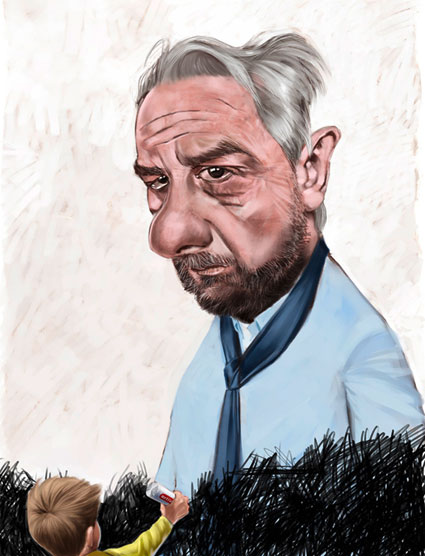
Arnulf Rainer
Weitere Portraits u.a. von: Angelina Jolie, Bruce Willis, Dean Martin, Dita von Teese, Kurt Russell, Amy Winehouse, Andre Rieu, Anna Netrebko, Joe Zawinul, Luciano Pavarotti, Sting, Andy Warhol, Arnulf Rainer, Damien Hirst, Herbert Prohaska, Hermann Meier, Pepi Hickersberger, Stefanie Graf, Thomas Muster.
See also more work of Bernd Ertl on toonpool
—
Pictures from the Exhibition:
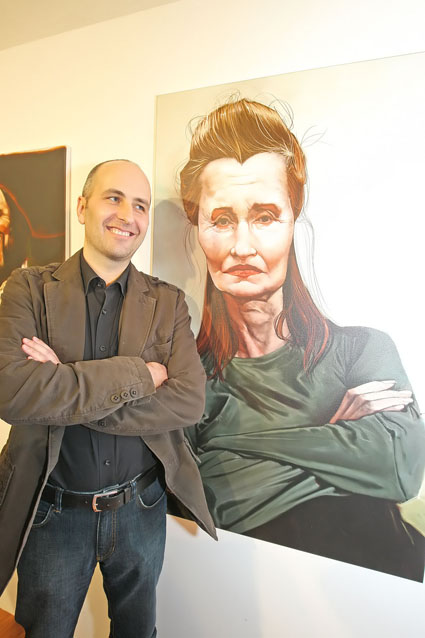
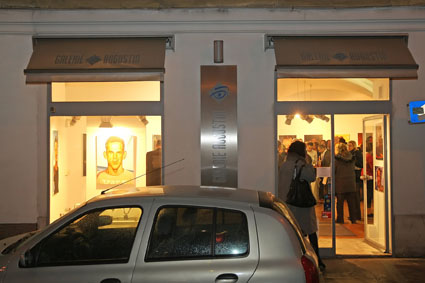
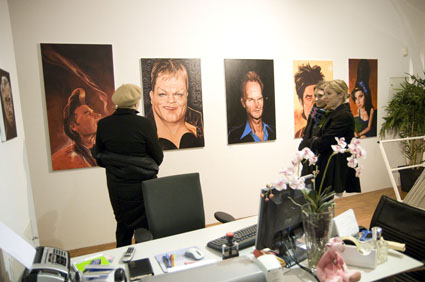
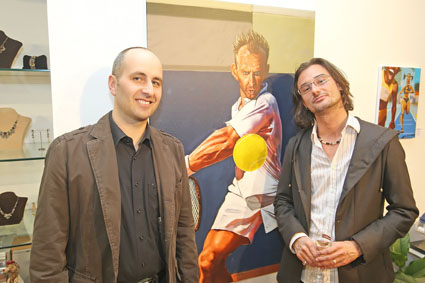
Bernd Ertl and gallerist Sascha Augustin
]]>
Queenio and YU Liang
Queenio
Could you tell us about the city and area where you are located?
Queenio: I live in HANG ZHOU at southern part of China, a romantic and old-age city where the legend of white snake comes from (a most romantic and well known legend over the nation).
Your pictures are fantastic professional artworks with philosophical stories. Are you selling your artworks to newspapers, magazines or other media? Or do you have another profession beyond art?
Q: Actually, I am still a second year student in China University of Art. I always do drawings at my own spare time after school. I use drawing as a way of entertaining myself and want to develop my own style. I have not sell any art works to newspapers, magazines or other media in the past. However, if you, any one or any organizations you know interest in buying my works, I am more than happy for you to contact me. I think it is a way to approve the value of my work in a more reality way. My works mainly exhibit on internet, such as DA exhibitions and has been exhibited in my school. Moreover, I have not published any book yet.
Are you able to live on producing artworks?
Q: I think I can ~
Could you tell us about your family?
Q: I have a simply family of three, me, mum and dad like most families in China result from China’s One Child Only Policy. They are great parents who help me explore my interest in drawing in my childhood and give me great support always.
Are you in contact with colleagues in your country and in other countries, too?
Q: Yes, as mentioned before I am still in the university.
Could you tell us about your way of education you have or have had?
Q:I started proper education on traditional art when I was 12 and start to interest in modern art in recent years. Besides on the study in the school, my curiousness on art drive me to start learning by myself through other various ways such as reading, internet and communication with other professors
Did you have had influences of traditional or modern art from
your own or other countries?
Q: Beijing is the place influences me mostly, where has the most strong art atmosphere in China in my opinion.
Which artists do you like most (your country and international)?
Q:Salvador Domingo Felipe Jacinto Dalí i Domènech, Yayoi Kusama, Taiyo Matsumoto and Andy Warhol.
Where do you receive informations and inspiration from? Newspapers, radio/tv, Internet?
Q: Almost everything I get in touch with.
Which hobbies and interests do you have besides work?
Q: Watch movie, music, reading and dessert.
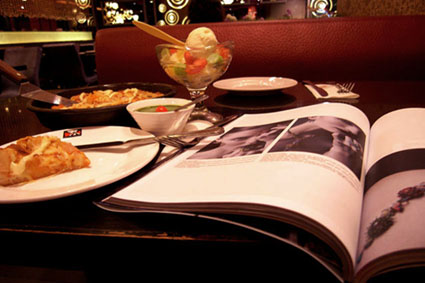
t: Do you spread your artworks over the Internet, how many
communities do you use?
Q: Yes,here is my BLOG: http://queenielh.blog.sohu.com/
What do you really hate?
Q: No movie+no music+ no dessert (LOL)
What are your 3 greatest wishes or dreams?
Q: Sun shines always, have plenty time to do everything I want to do, meet an alien.
What are your general interests in your artworks and coming projects?
Q: Most things are conceptual like, science , universe and old toys.
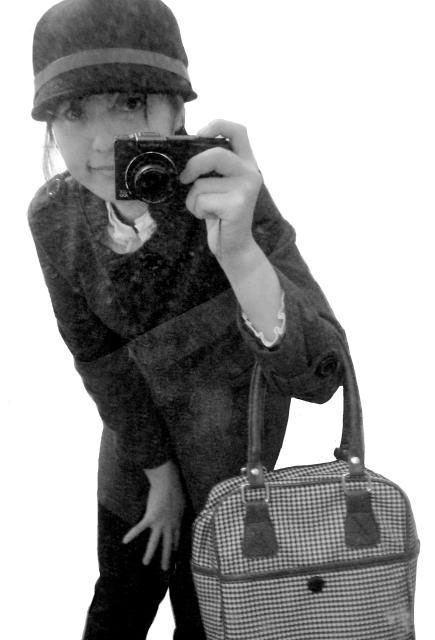
See more ofQueenio´swork on here
YU Liang
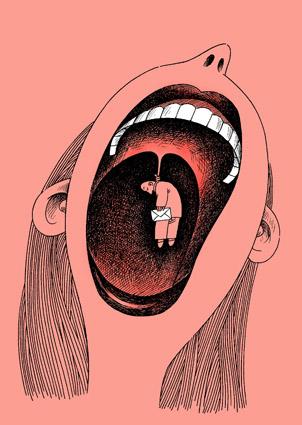
Could you tell us about the city and area where you are located?
Yu Liang: I live in Maanshan,Anhui Province China, near Nanjing and Shanghai. It’s a rising industry city which has 12,000,000 population. It in sight of Yangzte River and near predominant area of Yangzte River delta. Maanshan harbor is inartificial. The level of industry in Maanshan is high, the farm produce is plentiful and substantial. It has plenty of natural resource.
Your cartoons are fantastic professional artworks with philosopical and political stories. Are you selling your artworks to newspapers, magazines or other media? Or do you have another profession beyond art? Do you have (or did you have had) exhibitions? Do you have published books?
Y: I don’t like to talk about politics, but I would like to reflect politics in my works. I am a illustrator of some the most famous newspapers (or magazines) in China. Such as : “Reader” ( circulation of over 10 millions), “Youth of Liaoning” ( circulation of 2.4 millions) etc. Over 3000 of my works has been published in Chinese newspapers ( or magazines) like “Satire and humor”, “Chinese cartoons”, “Master of humor”. I had won over 30 prizes from Chinese or international cartoons competitions and I have joined some cooperational exhibitions. I really want to hold a personal exhibition, however, I don’t have a well chance. Now, the periodical office of “Reader” arrange a personal iconographal collection of selected specimens for me, my cooperation assemble “pioneer of cartoons” has been published (with some famouse Chinese cartoonist).
Are you able to live on drawing cartoons?
Y: No. The remuneration of Chinese cartoonists is very low, I love drawing cartoons, but it’s just my sideline. My full-time job is as art editor in a newspaper office.
Could you tell us if you are married and have a family (kids)?
Y: I live with my wife and lovely daughter in harmony, my daughter is a freshman in college, she is a smart, healthy and sunny girl.
Are you in contact with colleagues in your country and in other countries, too?
Y: A majority of my friends in cartoon is Chinese because I hardly go abraod, it baffle me completely communicate with international famouse cartoonists. But I have contacted with Mordillo in Argentina, Julian Pena-Pai in Romania, Massoud Shojai in Iran, Ronald Libin in Belgium.
Could you tell us about your way of education you have had?
Y: I graduated from Fine Arts Department of Chinese Anhui Normal University.
Did you have had influences of traditional or modern art from your own or other countries?
Y: I have both traditional and modern consciousness, I like either the deeply ideology of East Europe or the way of humor of West Europe.
Which artists do you like most (your country and international)?
Y: Holland’s Rembrandt, Russia’s Repin, Sweden’s Zorn, United States’s Sagent.
Where do you receive informations and inspiration from? Newspapers, radio/tv, Internet?
Y: I get part of the informations from the E-mails and letters of my Chinese and other countrieds cartoonal friends, some from the Interner. Besides, newspaper, radio and TV can also bring me some effective informations.
Which hobbies and interests do you have besides work?
Y: I have some hobbies like reading, listening music, sometimes I chat with my friends or join some parties and tea time.
Do you spread your artworks over the Internet, how many communities do you use?
Y: Concerning your question, you may find the answers by inputing my Chinese name “喻梁” in internet.
What do you really hate?
Y: I hate somebody who is hypocritical. I love somebody who is pure-hearted.
What are your 3 greatest whishes or dreams?
Y: My greatest wishes are: First. I can go to Germany, France, Italy and some other countries, to communicate with the cartoonists there. Second, I hope my daughter can continue her studies in Europe colleges after graduate. Third, I hope I can make more progress in my works, through this, I can get more remuneration to make my family more affluent.
What are your general interests in your artworks and coming projects?
Y: I am trying to find a new way to represent the cartoon art, use the softwares like Photoshop and Painter to create cartoons, exhibit the cartoons through the digital form. I hope I can hold my personal exhibition in Europe to exhibit my works about this new subject if there is any likelihood.
See more of Yu Liang´s work on here

